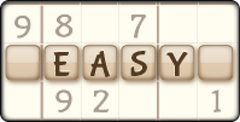How to Solve Sudoku Programmatically: A Guide to Algorithmic Solutions
Sudoku is a very popular puzzle game, where players are challenged to fill in a grid of numbers. The goal is for you to place the numbers, which range from 1-9 in a way that means every 3x3 subgrid only contains one of each. While this is simple to understand, you do need to take note that the puzzle can become complex when you ramp up the difficulty. As a result, solving Sudoku programmatically has become a very popular task for problem solvers. In this guide, we are going to run through the algorithmic techniques that you can use to solve puzzles like this programmatically. We're going to run through everything from backtracking to dancing links and consistent propagation, so you can make sure that the solutions you are coming up with are efficient, as well as reliable.
Introduction to Sudoku Algorithms
Before we take a deep dive into how to solve puzzles, it's important to take some time to understand the underlying structure. Sudoku puzzles are filled partially when you start them, which means you have some clues to work with. The task is for you to fill the remaining cells while abiding by the rules that are set. While solving puzzles like this can result in trial and error, if you solve it programmatically, then this means that you always arrive at the correct solution. If you want to find out more about the ways that you can solve puzzles, then some of the top options include backtracking, which uses brute force. You will try different solutions and then backtrack when an invalid state is reached. You also have dancing links. This technique is more advanced, it is used to implement exact cover problems, something that Sudoku is a very special case of. Each of these techniques has its strengths and weaknesses, so it's important for you to know what you are working with, before you dive into trying to create your own algorithm, or using someone else's as a basis to solve puzzles like Sudoku. If you want to find out more about that, keep on reading to find out everything you need to know.
Implementing Backtracking
Backtracking is the simplest, but at the same time, the most widely-used technique that you can use to solve Sudoku problems. The idea behind it is that you have to fill the grid one step at a time. You then check to see if the assignment is valid. If there is a conflict, such as a number that is repeated in a row or a column, then you need to try a different number. You will then continue until you know that there is a solution or until you have found all of the possibilities present.
If you want to practice backtracking then you need to find the next empty cell. Identify the next cell in the grid that happens to be empty. Try a number and then check the validity of that number. After you have placed it, you then need to see if it violates the rules of the game. When you have done this, you can then carry out the recursive step. If the number is valid, recursively solve for the next empty cell. If the number leads you to a dead end then backtrack and try something else. Continue this process until you can see that the grid has been filled, or if you know that there aren't any valid solutions remaining. You can use Python to carry out this implementation for you, and numerous sites will provide you with the code. Ultimately, by using different people's code, and by taking note of the differences between the structure and efficiency, it becomes easier for you to not only get the result you want out of your code but to also become more knowledgeable on how to create different archetypes. You can also scale your code so that it can be used across different verticals, which will help out a lot if this is something you would like to pursue.
Using Constraint Propagation
While backtracking can be good for a lot of different Sudoku puzzles, it can also be very inefficient when you are dealing with harder puzzles. Constraint propagation is a technique that reduces the possibilities at every step. This helps to speed up the solution process. The idea is for you to propagate constraints through the grid as you fill out the numbers. This is done by filling out possible values for your cells based on the state of the puzzle. One common approach is using naked singles and hidden singles. Naked singles can only contain one number due to the constraints. If this is the case, then put it down. If a number can only appear in one possible cell within a row, then place it. By following this, you can make it easier to backtrack, as you can reduce the total search space required at every step. Small things like this can make a major difference and it can also improve the accuracy rate by quite a lot. If you can keep this in mind then it will help you to become a better coder too, so keep that in mind.
Applying Dancing Links
Dancing Links is a lot more advanced when you look at algorithmic techniques. It's all based on the exact clever problem, too. The exact cover problem is more of a combinatorial problem where you are asked to find a subset of rows from the matrix, that covers all columns. Sudoku can be formulated as an exact cover problem, meaning that the Dancing Links can be used as an efficient method to solve it. When you look at the context of Sudoku, you will find that the Matrix represents the possible link placements in the grid. Each row corresponds to the placement of a number in the cell. Each column corresponds to the constraint. Dancing Links is used to search for the cover solution by uncovering and covering rows within the matrix. Even though this is quite complex, and involves you using data structures such as doubly linked lists, it's easily one of the most efficient ways for you to do larger or more difficult puzzles.
Leveraging Exact Cover Problem
The Exact Cover Problem is the heart of the Dancing Links algorithm. You need to find subsets of rows that exactly cover the columns. This means that each column has one row assigned to it. Formulations like this make it possible to use Sudoku as an exact cover problem. By framing Sudoku in this way, you can apply Dancing Links as a way to find the solution properly. If you are working with a very hard puzzle that would usually take a long time to solve then using backtracking alone probably isn't going to be the best solution. With that said, this approach, even though it's more complicated, can be a good way for you to solve larger and more difficult puzzles overall.

Optimizing Algorithmic Performance
While backtracking and constraint propagation are very effective in a lot of cases, performance can still be a bit of an issue. This is especially the case if you are working with a very large, or very difficult Sudoku algorithm. With that said, there are ways that you can optimize your approach. One of the first things you may want to do is focus on the least-constraining value. When the time comes for you to place a value in a cell, you need to select the number that rules out the fewest possibilities for the other cells. This helps you to reduce the overall branching factor. Constraint ordering is also important. Choose the next empty cell that is the most constrained. This is the best way for you to focus the search on the hardest parts first. You can also use heuristic improvements. Applying constraint propagation early on is the best way for you to speed up the process as a whole.
Debugging and Testing Solutions
When you have taken the time to implement your Sudoku algorithm, you then need to test and debug it so you can make sure that it works properly and efficiently. If you want some help when it comes to debugging then one of the first things you need to do is start with a well-known puzzle. You can start by testing your algorithm on a simple Sudoku puzzle that has a known solution. This will give you the chance to figure out if the algorithm is working as it should be, so you can move forward with a little more confidence.
Coding Examples and Resources
There are many resources available online that you can use to try and implement Sudoku-solving algorithms. You can even use websites like GitHub if you want. They have some open-source Sudoku solvers available. This one by Zanicar is a good starting point.
There is also this one by Benfowler. There are also several forums that you can use if you would like some personalized insight from developers. You can find this one here, on Stack Overflow, for example. Forums like this are a great way for you to perfect your algorithm while making sure that you are always able to experiment. There are a lot of algorithmic enthusiasts on the internet as well, who are usually happy to share their insight and their approach. In addition to hits, you have various tutorials and academic papers. These explain things like Dancing Links in even further detail, showing you how they can cover different puzzles. Making minor tweaks is often a good way for you to assess the efficiency of an algorithm, and it could also be a good way to drastically improve performance. Resources like this not only help you to refine your skills, but they also provide you with a way deeper understanding of both computational theory and how to solve problems.
If you experiment with things like open-source projects, forums, tutorials, and even academic papers, you will find that it is easier for you to gain the practical skills you need to solve puzzles, while also gaining a better understanding of the algorithm design. The more you engage with resources like this, the more you will see how concepts can be applied to solve other computational problems. Ultimately, this journey will make you a better programmer, if that is your aim, and it will also encourage you to think critically about different algorithms and how they can be used in the real world.

Conclusion
In conclusion, the more you happen to engage with resources, and the algorithms that can be used to solve puzzles, like the one presented by Sudoku, the more you will see how they can be applied elsewhere. Algorithms like this can be used to solve a huge range of computational problems, not only making you a better programmer, if that is your aim but also helping you to think more critically about algorithms and how they are used in the real world.
In this guide, we have covered several things, including key algorithmic techniques that are used to solve Sudoku problems programmatically. Starting with a more basic approach, such as backtracking, is often the best way for you to move forward. When you feel as though you have mastered this approach, you can then move on to more advanced techniques, such as constraint propagation. Dancing Links can also be experimented with, as can the exact cover problem. If you can take the time to optimize and debug the strategies you are using, then this is often the best way for you to create solid Sudoku solvers that go on to help people.
If you can experiment with this in your toolkit, then you will soon find that it is easier to equip yourself with the abilities you need to solve even the most complex of problems. You may also find that you can explore different combinatorial problems using similar techniques, which will help you on your coding journey.
Sudoku Levels
Seasonal Sudoku Games
More Games
Sudoku News
Disclaimer
DISCLAIMER: The games on this website are using PLAY (fake) money. No payouts will be awarded, there are no "winnings", as all games represented by 247 Games LLC are free to play. Play strictly for fun.





































